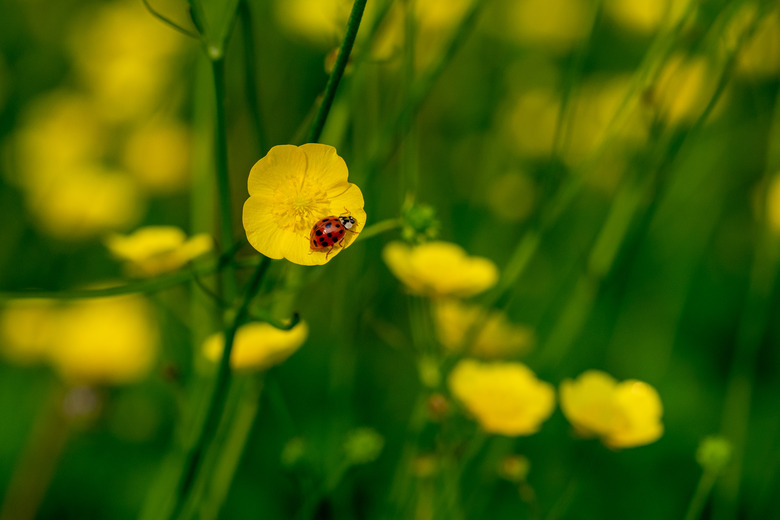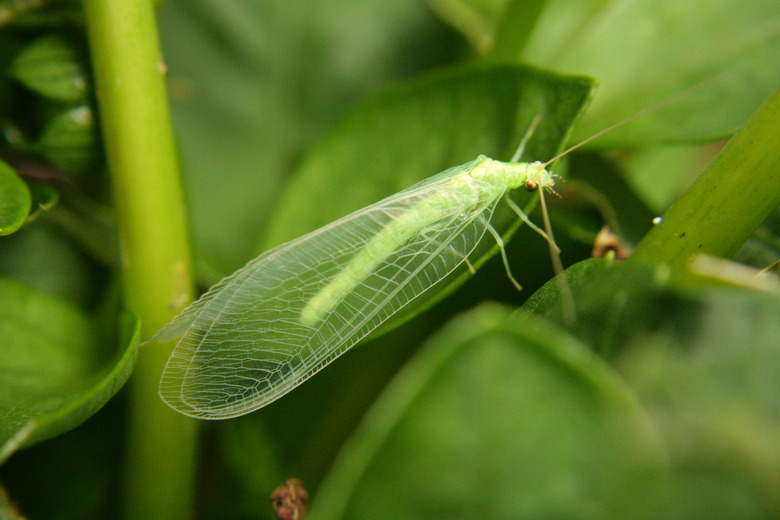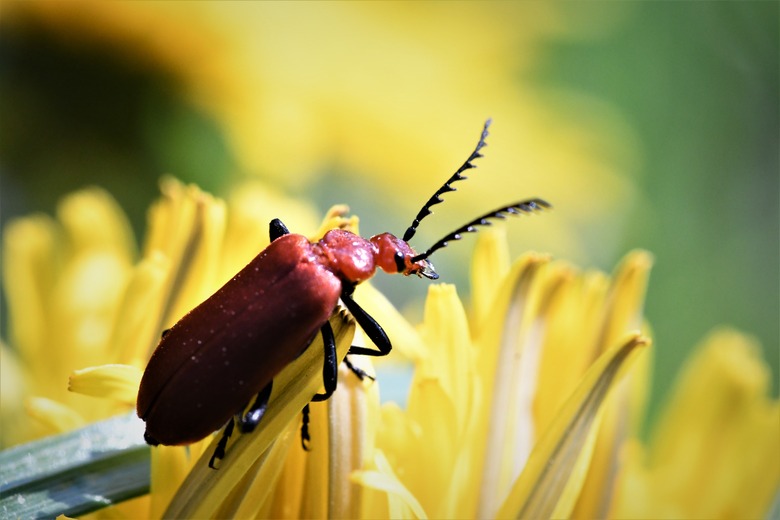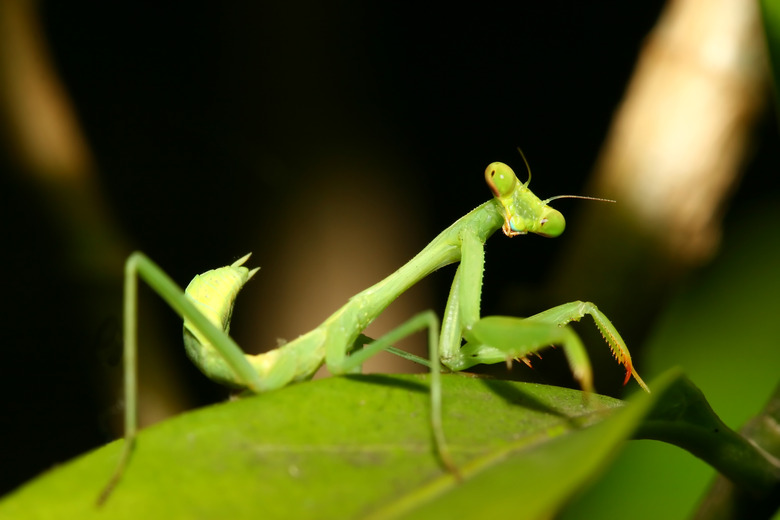The 10 Most Beneficial Insects — And How To Attract Them To Your Garden
We may receive a commission on purchases made from links.
Besides pollinators, such as butterflies and bees, loads of other insects are good for your garden plants. Some beneficial insects eat plant pests, resulting in a better growing environment for your garden. Attracting beneficial insects is often as easy as adding a few plants they like, such as flowering herbs or nectar-producing flowers. Beneficial insects are also one of the best forms of biological pest control, as they are chemical-free and completely safe for the soil and the plants.
Here is a list of 10 of the most beneficial insects to attract to your yard.
1. Ladybugs and Their Larvae
1. Ladybugs and Their Larvae
The ladybug, one of the easiest beneficial insects to identify, is great to have around the garden. Also known as the ladybird, ladybird beetle or lady beetle, more than 400 species of this classic spotted insect reside in North America. Ladybugs eat a variety of soft-bodied pests, such as aphids, thrips and small caterpillars, as well as some potato beetles, mealybugs, whiteflies and some insect eggs and larvae. One ladybug can eat up to 5,000 pests in its brief life span, which is usually shorter than the average growing season.
Ladybug larvae look completely unlike the cute adults, and it's important not to kill these because they also eat pests such as aphids. The larvae look a bit like a spiny, short caterpillar or a tiny alligator that's black with red markings. Ladybugs often lay their eggs near aphid colonies to ensure the larvae have plenty to eat once the eggs hatch. Some species lay eggs more than once during the growing season for added benefit to nearby plants.
Attract ladybugs with a variety of plants nearby, such as the herbs dill, fennel, cilantro, oregano and thyme. Dandelions also attract ladybugs, as does Queen Anne's lace. Many types of ladybugs also consume pollen and nectar besides plant pests. If purchasing ladybugs for your garden, keep in mind that they may not stay in your garden since they fly freely. As long as there's a steady food source nearby, the ladybugs should still frequent your yard.
2. Hover Flies
2. Hover Flies
The thousands of species of the hover fly vary greatly from one to the next; in other words, not all hover flies look alike. They range in size from 0.25 to 1.25 inches long and often have black and yellow markings, like many bees and some wasps. Some also have red or brown areas. It's easy to mistake some varieties for bees or wasps, as they often have a similar shape. The easiest way to tell the difference when the shape is similar is that hover flies only have two wings, while bees and wasps have four.
Hover fly larvae, which look like caterpillars, prey on garden pests, such as aphids, thrips and scale insects. Adult hover flies enjoy flower nectar and inadvertently pollinate plants in their quest for nourishment, so they're beneficial insects both as adults and as larvae.
Encourage hover flies to visit your garden by growing lots of nectar-producing flowers, such as alyssum. Hover flies also feed on the nectar of herb flowers, such as dill and coriander.
3. Green Lacewings
3. Green Lacewings
Green lacewings are light-green insects with clear, large wings. When fully grown, a lacewing is about 1/2 to 3/4 inch long; it's often found in an area with aphids nearby. Like the hover fly, adult lacewings mostly eat nectar and pollen.
The lacewing larvae are the true benefit to the garden when it comes to reducing populations of problem insects, such as aphids, and other soft-bodied pests and their larvae, such as caterpillars or the occasional beetle. Lacewing larvae, called the aphid lion, resemble a brown and tan caterpillar that's narrower at each end and has sharp, visible mandibles at the head.
The larvae are voracious eaters, consuming everything from aphids and thrips to spider mites, whiteflies and some mealybugs. These creatures devour up to 20 times as much as the ladybug in any given day. They also eat the eggs of butterflies and moths. Virtually any soft-bodied insect within reach could be a meal for green lacewing larvae.
To attract lacewings to the garden, grow a variety of plants that flower during the entire growing season. Limit (or eliminate) the use of pesticides, which kill the lacewing's food sources of insect pests.
4. Dragonflies and Damselflies
4. Dragonflies and Damselflies
Dragonflies and damselflies are fun to watch, and they're great for keeping pests, such as mosquitoes and moths, to a minimum. These four-winged fliers lay eggs in or near the water. Immature dragonflies are helpful in that they eat mosquito larvae, which are often found in relatively calm water. Damselflies are often mistaken as dragonflies, but they're just as beneficial. Damselflies are smaller with more delicate, slender bodies, such as the shiny blue varieties often seen in the same area as dragonflies.
Attract dragonflies with backyard ponds and plants around the water. Some dragonflies eat butterflies, so you may not want to put a garden designed to attract butterflies in an area with a sizable pond.
5. Assassin Bugs
5. Assassin Bugs
With "assassin" in its name, this insect's priorities are a dead giveaway. The leafhopper assassin bug, Zelus renardii, is particularly useful around the garden. This species of assassin bug is 1/2 inch long, red and brown on top and green to yellow underneath. These predatory insects inject a digestive enzyme into their prey, which allows them to eat insects larger than they are.
Though they aren't very discriminatory, leafhopper assassin bugs eat leafhoppers, mites, aphids, boll weevils, thrips and mealybugs, among other pests. These and other types of assassin bugs sometimes eat other predatory insects, such as ladybugs, so it's best not to introduce both insects to your garden at the same time.
Although assassin bugs can be found on many garden plants, many are also found on trees and shrubs, such as bugs in the Zelus genus. Some species, such as the spined assassin bug (Sinea diadema) are especially fond of wildflowers, including goldenrod. If you have a wildflower garden, it's likely to attract assassin bugs.
6. Soldier Beetles
6. Soldier Beetles
The soldier beetle, a relative of the lightning bug, is of similar size and shape but without that magical ability to illuminate. Soldier beetles, sometimes called leatherwings, are often yellow or reddish with black or brown markings on the wings. Though they feed on plant nectar and are good at pollinating, they're also predators of other insects, such as caterpillars and aphids, grasshopper eggs and several beetle varieties that are pests to crops. Soldier beetle larvae eat the larvae and eggs of other insects, such as grasshoppers, moths and beetles. Some are generalists, so they may eat other beneficial insects.
Soldier beetles are drawn to flowers with numerous tiny blooms, such as goldenrod and milkweed. They're also drawn to relatively moist environments or areas with water nearby.
7. Robber Flies
7. Robber Flies
Another insect with a menacing name, more than 1,000 species of the robber fly span North America. These flies typically have long, slender bodies with a humplike protrusion behind the head, looking a bit like a cross between a wasp and a damselfly rather than the typical housefly. Robber flies are often brown or black, but some have coloration like a bumblebee.
The speedy robber fly zips in and attacks flying prey much larger than itself. Some species prefer grasshoppers in their diets, while others are generalists that enjoy hornets, wasps, flies, bees and even butterflies.
The small, white larvae of the robber fly often live in soil or in decaying wood, preying on grubs and insect eggs. Plants that have nectar, such as goldenrod, attract robber flies since the females need this sugary substance before producing eggs.
8. Parasitic Wasps
8. Parasitic Wasps
Parasitic wasps, also known as parasitoid wasps, are among the best biological control methods for keeping plant pests to a minimum. Numerous species of parasitic wasps live in North America, and many are less than 1/2 inch long. Some are small enough to go unnoticed, barely bigger than a grain of sand. They lay their eggs within other insects and sometimes within other insect eggs. Once the wasp larvae hatch, they feed on caterpillars, leafhoppers, thrips, flies and numerous crop pests.
Braconid wasps are particularly helpful for controlling cabbage worms and tomato hornworms. The trichogramma wasp, which is a chalcid wasp the size of a gnat, is the most widely used biological control wasp for sale, as their larvae prey on cabbage worms, cabbage loopers, tomato hornworms, corn borers and numerous types of moths. A shallow birdbath with rocks in it provides a place for parasitic wasps to rest and drink.
9. Praying Mantis
9. Praying Mantis
"Preying" may be more accurate than "praying" for the iconic mantis, which consumes numerous insect varieties. Mantises eat flies, beetles, moths, mosquitoes and crickets, among other insects. If they're hungry enough, they may even eat others of their own species.
Their diet goes far beyond just garden pests as prey; some will even eat relatively large creatures, such as the occasional frog. Keep a close eye on your hummingbird feeders, especially late in the season when mantises have grown large. A voracious praying mantis can lurk on a feeder, capture, and kill hummingbirds.
The praying mantis is beneficial to your garden plants, but if you've added other beneficial insects, you may not want to add praying mantises since they don't really discriminate when they're looking for insects to eat.
10. Mites
10. Mites
Predatory mites are used primarily to control that ever-so-common plant pest, the spider mite. Some also eat thrips. Tiny orange or pink predatory mites can even be effective indoors for plants infested by spider mites. Predatory mites can eat 20 to 25 young spider mites or spider mite eggs in a day or more than five fully grown spider mites. The helpful puny predators are sold in cooled containers and are applied to plants by shaking out the contents over the affected plants after misting the plants with water. The predatory mites will find their prey on the underside of plant leaves.
It only takes a few of these helpful mites to take care of pest populations on the average houseplant or garden plant. It takes 500 or more to treat an affected tree.
How to Attract Beneficial Insects to Your Garden
How to Attract Beneficial Insects to Your Garden
Much like attracting birds to your backyard feeders, it's easiest to attract beneficial insects if your yard contains the type of food or shelter they're seeking. Many beneficial insects consume nectar in the adult phase of life. Nectar plants, such as alyssum, bloom early in spring, drawing beneficial bugs, such as parasitic wasps, to your yard early in the season. This helps keep pests to a minimum even at the beginning of the growing season.
Other plants, such as yarrow and Queen Anne's lace, also benefit the good bugs. An herb garden is a great way to attract them as well, with an added bonus that the herbs can be used for cooking or for fragrance. Lavender, lemon balm, dill, sage, fennel and mint are all excellent beneficial-insect attractors if you allow at least some of the plants to flower. In most cases, it's the flowers that the beneficial bugs enjoy rather than the leafy parts of these plants.
The best way to draw more beneficial insects to your yard is to be very careful about any pesticides or toxic chemicals you use outdoors. Many pesticides kill all sorts of insects, including the beneficial varieties, and some are even harmful to honeybees, which are of huge importance to the ecosystem. Avoid using toxic pest-killing chemicals and plant treatments entirely if at all possible in order to create the healthiest environment overall. It's also important to remember that chemicals sprayed on or around plants end up in the soil and even the waterways due to water runoff.



